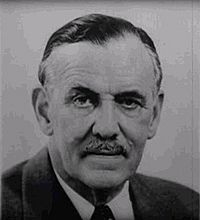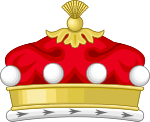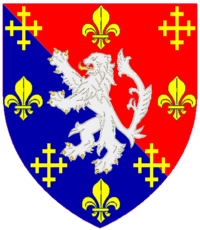Hugh Kindersley, 2nd Baron Kindersley facts for kids
Quick facts for kids
Hugh Kindersley, 2nd Baron Kindersley
|
|
|---|---|
 |
|
| Born | 7 May 1899 Knightsbridge, London, England |
| Died | 6 October 1976 (aged 77) Tonbridge, Kent, England |
| Allegiance | |
| Service/ |
|
| Years of service | 1917–1946 |
| Rank | Brigadier |
| Service number | 61108 |
| Unit | Scots Guards |
| Commands held | 6th Airlanding Brigade |
| Battles/wars | World War I World War II |
| Awards | Commander of the Order of the British Empire Military Cross Commander of the Order of St. Olav |
| Relations | Robert Kindersley, 1st Baron Kindersley (father) |
Hugh Kenyon Molesworth Kindersley (born May 7, 1899 – died October 6, 1976) was an important British Army officer. He was also a successful businessman and banker. His father, Robert Kindersley, 1st Baron Kindersley, was also a well-known businessman. Hugh Kindersley was known as the 2nd Baron Kindersley.
Contents
Early Life and Family
Hugh Kindersley was born in Knightsbridge, London. His parents were Robert Molesworth Kindersley and Gladys Margaret Beadle. He went to school at Eton College, a famous boarding school.
In October 1921, he married Nancy Farnsworth. They had two daughters, Patricia and Ginette. They also had a son named Robert, who later became the 3rd Baron Kindersley.
Before his military service, Kindersley worked in finance. From 1927 to 1964, he was a managing director at Lazard Brothers. This was a major banking company.
Military Service and World Wars
Hugh Kindersley joined the Scots Guards in 1917. He served in the First World War. For his bravery, he received the Military Cross award in 1918.
When the Second World War began, he rejoined the Scots Guards. He later led a tank battalion within the Guards Armoured Division.
Leading the 6th Airlanding Brigade
Kindersley also trained as a paratrooper and a glider pilot. In May 1943, he was promoted to Brigadier. He was then put in charge of the 6th Airlanding Brigade.
He played a key role in the Normandy landings on D Day, June 6, 1944. He suggested that Major John Howard and his company should lead a special mission. This mission was to capture Pegasus Bridge and Horsa Bridge. These bridges were very important for the Allied invasion.
Kindersley landed with his division's headquarters at 3:30 AM on D-Day. He was later injured during the Battle of Bréville. He had to return to England for treatment. Another officer, Brigadier Edwin Flavell, took over his command.
For his service, Kindersley received several honors. He was made a Member of the Order of the British Empire (OBE) in 1941. He was then made a Commander of the Order of the British Empire (CBE) in 1945.
Life After the War
After the war, Kindersley continued his career in business. He became Chairman of Lazard Brothers from 1953 to 1964. He also served as a director there until 1971.
He held many important positions:
- He was a director of the Bank of England from 1947 to 1967.
- He was Chairman of Royal Exchange Assurance from 1955 to 1967.
- He was Chairman of Rolls-Royce Limited from 1956 to 1968.
In 1954, he became the 2nd Baron Kindersley after his father passed away. He was also honored by Norway, receiving the Commander of the Royal Order of St Olav in 1958.
Kindersley was involved in many other organizations. He was chairman of the Officers Association from 1946 to 1956. He was also the Honorary Colonel of the 10th Parachute Battalion. In 1951, he served as High Sheriff of the County of London.
He lived in Leigh, near Tonbridge, Kent. Hugh Kindersley passed away in Tonbridge on October 6, 1976. His son, Robert, then became the 3rd Baron Kindersley.
Awards and Honors
Hugh Kindersley received many awards for his service and contributions:
- Commander of the Order of the British Empire (1945)
- Military Cross (1919)
- Commander of the Order of St Olav (Norway, 1958)
- Honorary Fellowship of the Royal College of Surgeons (1959)
- Member, Court of Patrons, Royal College of Surgeons (1960)
- Royal College of Surgeons Honorary Gold Medal (1975)
His Military Cross was awarded for his bravery and leadership in October 1918. He showed great courage in capturing an enemy machine gun post. He also skillfully led his platoons in house-to-house fighting. His actions helped win and hold ground with few casualties.
|



